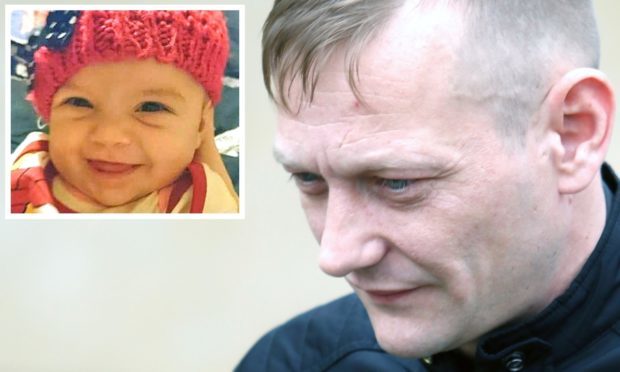A former soldier who killed his girlfriend’s five-month-old daughter by shaking her repeatedly has been jailed for seven and a half years.
Gordon McKay, 38, was supposed to be looking after baby Hayley Davidson when he inflicted the fatal injuries.
He initially told his 27-year-old partner, Catherine Davidson, that Hayley was injured after wriggling off a beanbag when he left her alone to run a bath.
But he later admitted to police he had shaken her ‘three or four times’, resulting in her head ‘whipping backwards and forwards’.
Scans revealed Hayley had a bleed on the brain. She was taken off life support three days after the incident, on Valentine’s Day 2016, at McKay’s home in Buckhaven, Fife.
An investigation found McKay and Mrs Davidson smoked cannabis together, with Hayley in the room, the night before the attack.
Scans also showed that she had “a number of healing fractures over various parts of her body and of different ages” when she was admitted to hospital.
Hayley had previously had hospital treatment for a broken arm on New Year’s Day 2016 — caused by McKay — but which medics and social care staff did not regard as suspicious nor acted on.
At the High Court in Edinburgh today, judge Lord Uist told McKay he had no other option but to send him to prison.
The judge had earlier heard defence solicitor John Scott QC say that his client met the criteria needed for a diagnosis of Post Traumatic Stress Disorder.
The court heard that whilst serving with the Black Watch in Iraq in 2004, McKay witnessed his comrade Sergeant Stuart Gray die after being blown up by standing on an Improvised Explosive Device.
However, Lord Uist said a custodial sentence was inevitable and noted that McKay wasn’t entirely truthful to the social worker who was commissioned to write a report into his character.
He added: “I emphasise that your plea of guilty included an admission of assault by repeated shaking in order to dispel any suggestion that what happened was nothing more than an accident.
“There should be no doubt on the part in the minds of anybody that Hayley’s short life was brought to an end by a criminal act on your part.”
The judge added: “Hayley’s death has caused profound grief to the members of her family.
“The taking of a baby’s life by an assault involving repeated shaking even where it does not amount to the crime of murder is an extremely grave crime which must attract a lengthy sentence of imprisonment.”
McKay was originally charged with murder but last month at the High Court in Livingston, he pleaded guilty to a reduced charge of culpable homicide.
Defence solicitor John Scott QC told the court: “Mr McKay is very sorry for what happened. He still can’t understand what happened. He appreciates that the only disposal in this case is the imposition of a lengthy prison sentence.”










